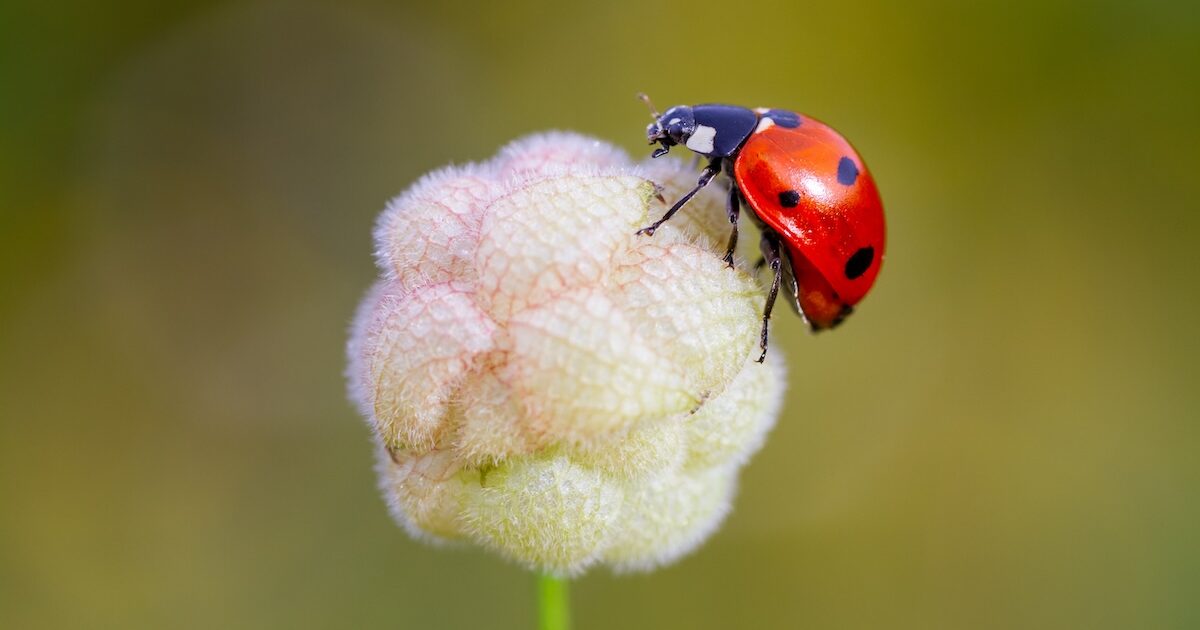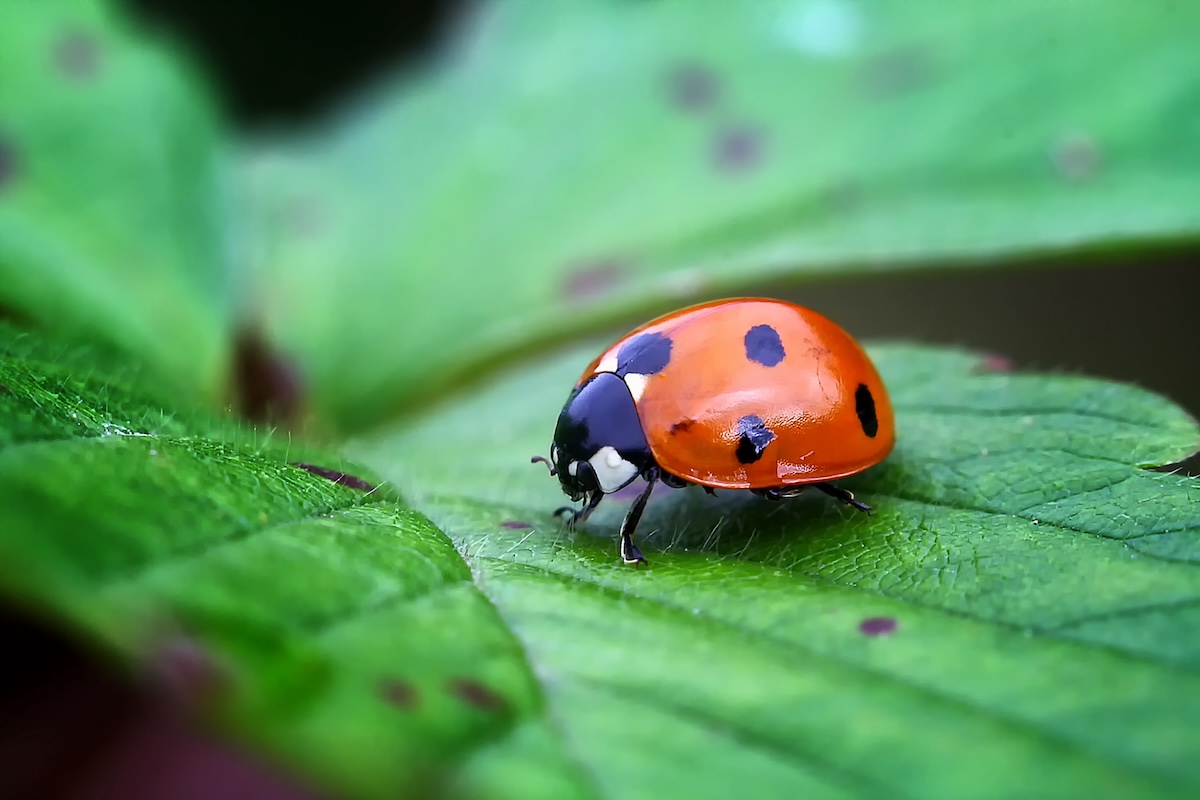
Have you ever wondered what tiny creatures help keep your garden healthy and vibrant? Consider Convergent Lady Beetles in Florida,–remarkable insects that play a key role in natural pest control. When it comes to maintaining a thriving garden, you’ll want the convergent lady beetle on your team.
Is the Convergent Lady Beetle a Ladybug?
You might often hear the terms “lady beetle” and “ladybug” used interchangeably. So, is there a difference? Let’s clear up any confusion about these charming garden helpers.
Lady Beetle vs. Ladybug: What’s in a Name?
- Terminology: “Lady beetle” is the scientifically accurate term for these insects, while “ladybug” is the more common name used by the general public.
- Classification: Both terms refer to members of the Coccinellidae family. Meanwhile, these insects are beetles, not true bugs, hence the preference for “lady beetle” in scientific contexts.
Characteristics of Lady Beetles
- Appearance: They typically have a rounded, dome-shaped body with a vibrant coloration, often red or orange with black spots.
- Diet: Lady beetles feed on pests like aphids, making them beneficial for gardens and crops.
Common Misconceptions
- Gender: Despite their name, not all lady beetles are female. The term “lady” in their name dates back to the Middle Ages when these beetles were associated with the Virgin Mary, often referred to as “Our Lady.”
- Behavior: Some people think that all lady beetles are harmless, but there are nonnative species–such as the Asian Multicolored Lady Beetle–that can be more aggressive and even bite.
The Life Stages of Convergent Lady Beetles
Convergent Lady Beetles have fascinating life stages, each uniquely adapted to their role in pest control.
The Colorful Adult Stage
- Appearance: Reddish-orange with black spots. Some beetles have all 13 spots, while others have fewer.
- Distinct Features: White lines on the prothorax (shoulder plate) converge behind the head, with white dashes marking the top of the prothorax.
- Function: Adults feed on aphids and other plant pests, making them valuable for gardens and farms.
The Tiny Alligator-Like Larvae
- Shape and Color: Long, tubular bodies with six legs near the head, spiky with orange dots on black bodies.
- Role: Larvae consume large quantities of aphids, protecting plants from damage.
- Season: Typically seen from early spring to early summer.
The Round and Plump Pupae
- Appearance: Round and plump, resembling a snail. Coloring is orange with black spots, opposite of larval coloring.
- Transition: The pupal stage is a resting phase where larvae transform into adults.
These stages demonstrate the beetle’s adaptability and effectiveness in controlling pest populations throughout its life cycle.

Natural Pest Control Insect
Convergent Lady Beetles are nature’s pest control agents, offering a sustainable solution to managing garden pests.
How They Help
- Biological Control: Native to Florida, these beetles are natural predators of aphids and other harmful insects.
- Eco-Friendly: By reducing the need for chemical pesticides, they promote a healthier environment for plants and humans.
Tips for Using Lady Beetles
- Purchasing: Containers of live beetles can be bought for garden release. However, they might not stay near the release site.
- Conservation: Encourage their presence by planting diverse crops and avoiding pesticides that harm beneficial insects.
Understanding their role and taking action to support their population can significantly enhance garden health.
Challenges and Considerations of Convergent Lady Beetles
While Convergent Lady Beetles offer many benefits, there are some challenges to consider.
Potential Issues
- Parasites: Commercially purchased beetles may harbor parasites, potentially affecting local populations.
- Nonnative Competition: The Asian Multicolored Lady Beetle, a nonnative species, can displace native Convergent Lady Beetles.
Infestation Signs: Lady Beetles in Florida
While Convergent Lady Beetles are beneficial for gardens, their presence indoors can sometimes be problematic. Recognizing the signs of an infestation can help you manage and address the issue effectively.
How to Spot an Infestation
- Visible Clusters: One of the most obvious signs is seeing clusters of lady beetles on windows, doors, or ceilings. They often gather in large numbers, especially during cooler months.
- Yellowish Stains: Lady beetles release a yellowish fluid when disturbed, which can stain surfaces. Finding these stains on walls or furniture indicates their presence.
- Allergic Reactions: Some people may experience mild allergic reactions, such as eye irritation or breathing difficulties, due to lady beetle infestations.
Lady beetles are attracted to light, so you might notice them gathering around windows or light fixtures. This is one of the reasons why they will come inside your home.
How to Get Rid of Problematic Convergent Lady Beetles in Florida
If you find yourself dealing with an infestation, here are some effective strategies to manage and remove these beetles.
Immediate Actions
- Vacuuming: The quickest way to remove lady beetles is to vacuum them up. Use a vacuum with a hose attachment to gently collect the beetles, then release them outside far from your home. Be sure to empty the vacuum bag or container immediately.
- Sticky Traps: Place sticky traps near windows, doors, and other areas where beetles are commonly seen. These traps can help catch beetles that have entered your home.
Long-Term Prevention
- Seal Entry Points: Inspect your home for cracks and gaps around windows, doors, and utility openings. Use caulk or weather stripping to seal these entry points and prevent beetles from coming inside.
- Screen Repair: Ensure that window and door screens are in good condition and fit tightly. Repair or replace any damaged screens to keep beetles out.
- Natural Repellents: Citrus oil, bay leaves, or cloves can act as natural repellents. Place these items near entry points or areas where beetles are seen.
Outdoor Management
- Exterior Lighting: Reduce outdoor lighting at night, as lady beetles are attracted to light. Use yellow or sodium vapor lights, which are less attractive to insects.
- Plant Maintenance: Keep your garden and plants healthy to attract lady beetles to their natural habitat and away from your home. Regularly remove dead plant material and manage pest populations.
Worried About Lady Beetles? Call Drive-bye Exterminators
If you have concerns about Convergent lady beetles in Florida, don’t hesitate to reach out to us for help. We can help you properly identify the lady beetle near or in your home and remedy the infestation. Call us today to learn more!






